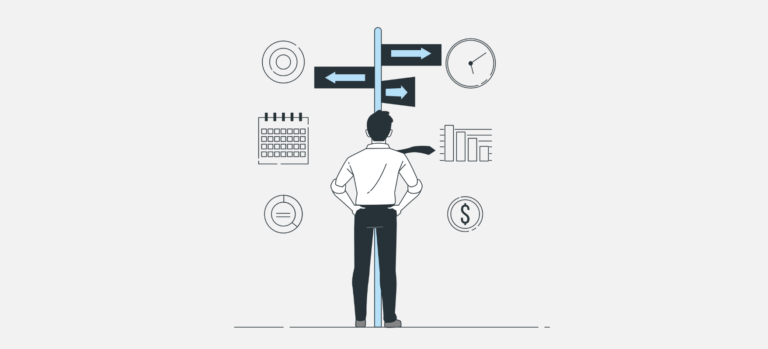In Switzerland, the market offers several types of life insurance, each serving different purposes. Some focus on coverage in the event of death to protect family or financial partners, while others prefer thesavings or investments for long-term needs.
In this article, we'll review the main types of life insurance, their respective advantages and the criteria to consider when choosing the best option for your needs.
Death insurance
Death insurance is pure risk insurance, which provides for the payment of a lump sum or annuity to the designated beneficiaries if the policyholder dies before the end of the contract period.
Benefits can be used for maintain family members' standard of living, pay off debts such as mortgages and credit, cover funeral expenses and other unexpected expenses, or finance children's education.
Single life insurance
With single-life insurance, only one person is insured. In the event of the policyholder's death, the beneficiary receives the death benefit.
Joint life insurance
In joint life insurance, two people are insured. When one of them dies, the other receives the death benefit.
Constant capital death risk insurance
Accumulating life insurance is designed to meet the financial needs of people who increase over time. The sum insured increases regularly, according to a percentage or a fixed amount defined at the time of purchase.
This type of contract is particularly well-suited to situations where financial responsibilities, such as bringing up children, maintaining the household standard of living or factoring in inflation, increase as the years go by. However, as the risk for the insurer gradually increases, so do the premiums. premiums are generally higher.
Constant capital death risk insurance
Decreasing capital death insurance, on the other hand, is specifically designed to cover temporary financial needs that diminish over time. The sum insured gradually decreases according to a defined trajectory, often in parallel with a debt, such as a mortgage or other credit.
It offers a targeted and cost-effective solution, since premiums are generally low than increasing-capital insurance, since the insurer's risk decreases over the years.

Disability insurance
Disability insurance is pure risk insurance, providing financial protection for a person who loses his or her ability to work and earn a living as a result of an accident. disease or a accident. It also covers the needs of the insured's dependents.
This insurance pays annuities proportional the degree of disability, determined according to the same criteria as for social insurance. For working people, the calculation is based on the difference between pre- and post-disability income. For non-working people, the loss of ability to perform their usual tasks is assessed.
Life insurance with restitution
Life insurance with restitution is an insurance policy for capital The main purpose of this simple policy is to build up capital. The premiums paid by the policyholder finance the agreed benefit, plus underwriting interest.
- In case of life : The policyholder receives the capital sum due at the end of the contract, plus any surplus.
- In the event of death : Beneficiaries receive at least the savings premiums paid, supplemented by surplus and/or interest in accordance with the general terms and conditions.
This type of insurance is suitable for people with a specific financial goal, as it imposes a discipline of regular payments, which favors the realization of their project compared to more flexible bank savings.
Combined life insurance
Endowment life insurance combines savings with protection in the event of death.
- If the policyholder is still alive at the end of the contract, he or she receives the capital sum and any surplus.
- In the event of death before maturity, the beneficiaries receive the sum insured and any surplus shares, in accordance with the terms of the contract.
This type of insurance is used both to protect loved ones in the event of death and to prepare a savings for retirement. It is particularly popular with families for its role in the 3rd pillar, offering security and long-term provision.
Unit-linked life insurance
Unit-linked life insurance combines savings and protection in the event of death, just like traditional endowment insurance. What sets it apart, however, is the way in which the investments are managed.
- In the event of death before the end of the contract : The beneficiary receives at least the agreed death benefit. If the value of the fund units is higher, the beneficiary receives the higher value.
- If alive at maturity : The policyholder receives the value of his or her fund units at the market price, with no guaranteed minimum amount, but with the possibility of an attractive capital gain if the financial markets perform well.
The special feature is that savings premiums are invested in funds chosen by the policyholder, who decides on the level of risk and can adjust his or her investments during the term of the contract. Unlike traditional insurance, where the insurer assumes only the investment risk and guarantees a minimum amount, the policyholder in a unit-linked insurance takes an active part in the decisions and assumes the risks.
This type of contract offers high yield potentialBut it also means exposure to market fluctuations, with the risk of losses in the event of poor performance.
Life annuities
The life annuities offer the insured a regular income for life, regardless of longevity. The policyholder purchases the annuity by paying a lump sum, often in the form of a single premium, or by gradually building up an annuity. capital via annual premiums before payments begin. Life annuities can be immediate, starting shortly after purchase, or deferred, starting at a later date, allowing time to build up the necessary capital.
These annuities are generally chosen by people who are close to retirement or who have accumulated sufficient capital. They can be taken out on a single or joint basis. An option with return allows the remaining unused capital to be paid to beneficiariesA no-return option maximizes annuity payments, but no capital is paid out.
Temporary annuities
The temporary annuitiesUnlike life annuities, annuities only cover a specific period, chosen at the time of purchase. They are useful for meeting one-off financial needs, such as financing a new home. early retirement until the age at which AHV or 2nd pillar benefits begin.
They are less expensive than life annuities, as they do not extend over an indefinite period. Temporary annuities are suitable for people with clear financial objectives over a limited periodsuch as covering projects or bridging a temporary financial gap.
Frequently asked questions
The choice of life insurance depends first and foremost on your objectives personal and financial :
- Protecting loved ones : Opt for death or risk insurance (single or joint life) to guarantee payment of a lump sum or annuity in the event of death.
- Building savings or preparing for retirement : Life with restitution" or "joint life" contracts combine protection and savings.
- Investment : Life insurance linked to a fund, preferably in a bank, gives you a choice of investment vehicles, with attractive potential returns but exposure to market fluctuations.
In principle, there is no maximum amount required by law to take out life insurance. The sum insured is freely determined according to your needs, the level of protection required and the terms of the contract. However, tax considerations may apply to very large sums.
If the life insurance policy is taken out under the pillar 3athe maximum contribution is CHF 7'258 / year.
There are several advantages to opening a life insurance policy:
- Providing financial security for your loved ones in the event of death.
- Building up savings over the long term, through regular payments and/or investment opportunities.
- Benefit from an advantageous tax framework (particularly with regard to transfers, taxation of gains and tax deductions).
- Preparing for retirement by supplementing your future income.
Life insurance is mainly used to :
- Protecting beneficiaries in the event of death (death insurance).
- Build and grow your savings to finance projects or prepare for retirement (life insurance, endowment or unit-linked).
- Offering regular income solutions via life or temporary annuities, often adapted to retirement needs.
There is no not from legal limit the number of life insurance policies you can take out. However, it's important that each contract meets a specific objective, in order to optimize the management of your assets and take full advantage of tax benefits.
A term life insurance policy is established for a specific period of time:
- Regular monitoring and review : Check that your contract still meets your needs as it nears expiry.
- Conversion or renewal : Depending on the conditions, you may consider converting it to a lifetime contract, or taking out a new contract to continue benefiting from coverage or savings.
- Use of funds : At the end of the contract, if you are still alive, you receive the accumulated capital, which can be used to finance a project or strengthen your retirement savings.
Yes, life insurance policies must be declared to the tax authorities. Taxation varies according to :
- Premiums paid,
- Surrender value,
- Annuities received, etc. Gains often benefit from advantageous tax treatment, but it is advisable to consult a tax advisor to ensure that all reporting obligations are met.
The "cash surrender value" is the amount you can recover if you decide to terminate your policy early. This amount generally includes :
- Premiums paid,
- Earned interest or bonuses,
- Possibly less management fees or exit penalties.
The calculation of the surrender value depends on the specific terms of the contract:
- It includes the cumulative amount of premiums paid,
- Technical interest or capital gains,
- Any closing costs or penalties for early redemption.
Funds can be released in several situations:
- Contract expiry date : You receive the lump-sum or annuity payments.
- Partial or total repurchase : You can request early surrender of the contract, which involves recovering the surrender value, possibly subject to fees or penalties.
- Special cases : Certain exceptional events (disability, proven financial difficulties, etc.) provide for specific unlocking procedures.





